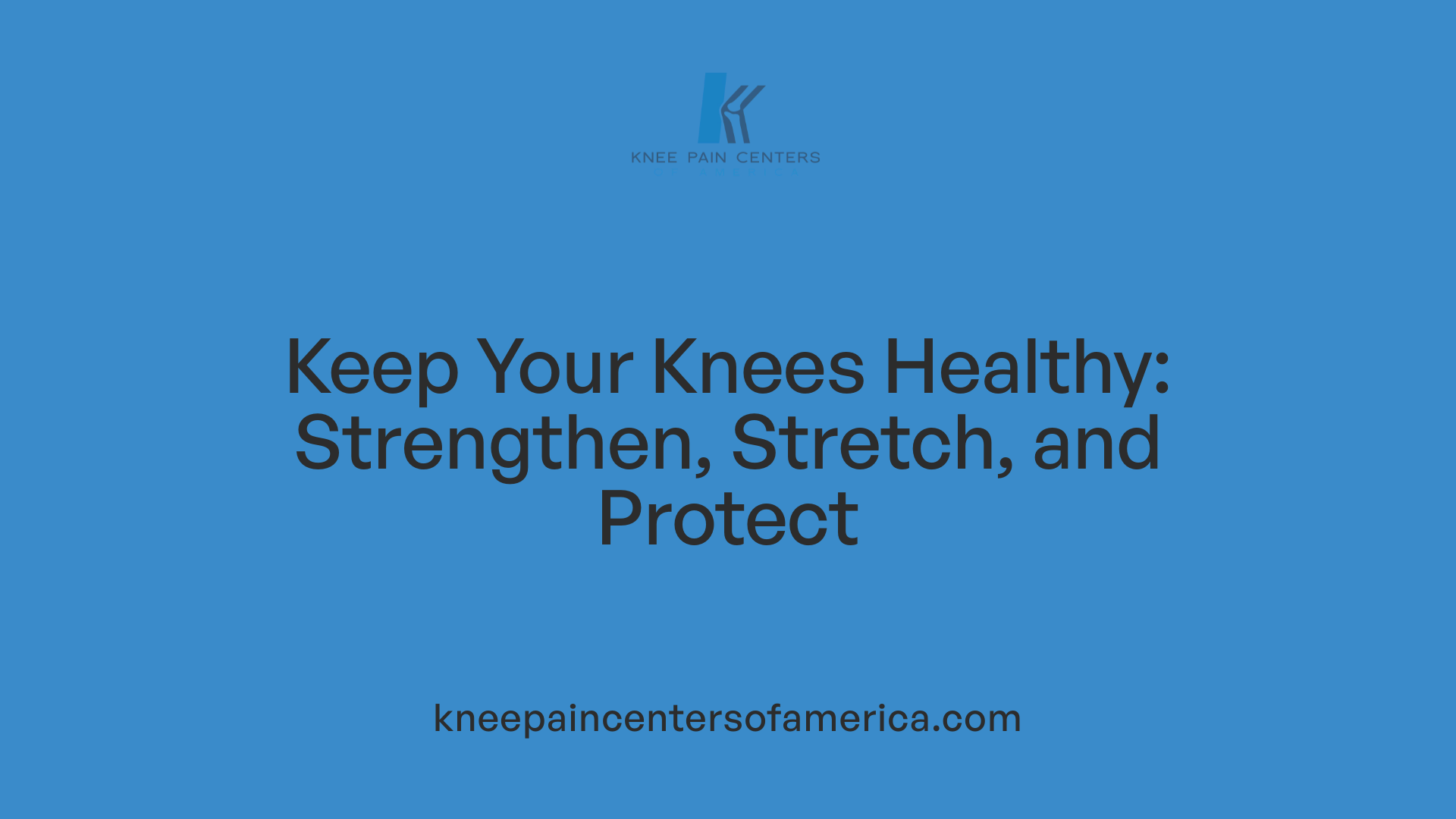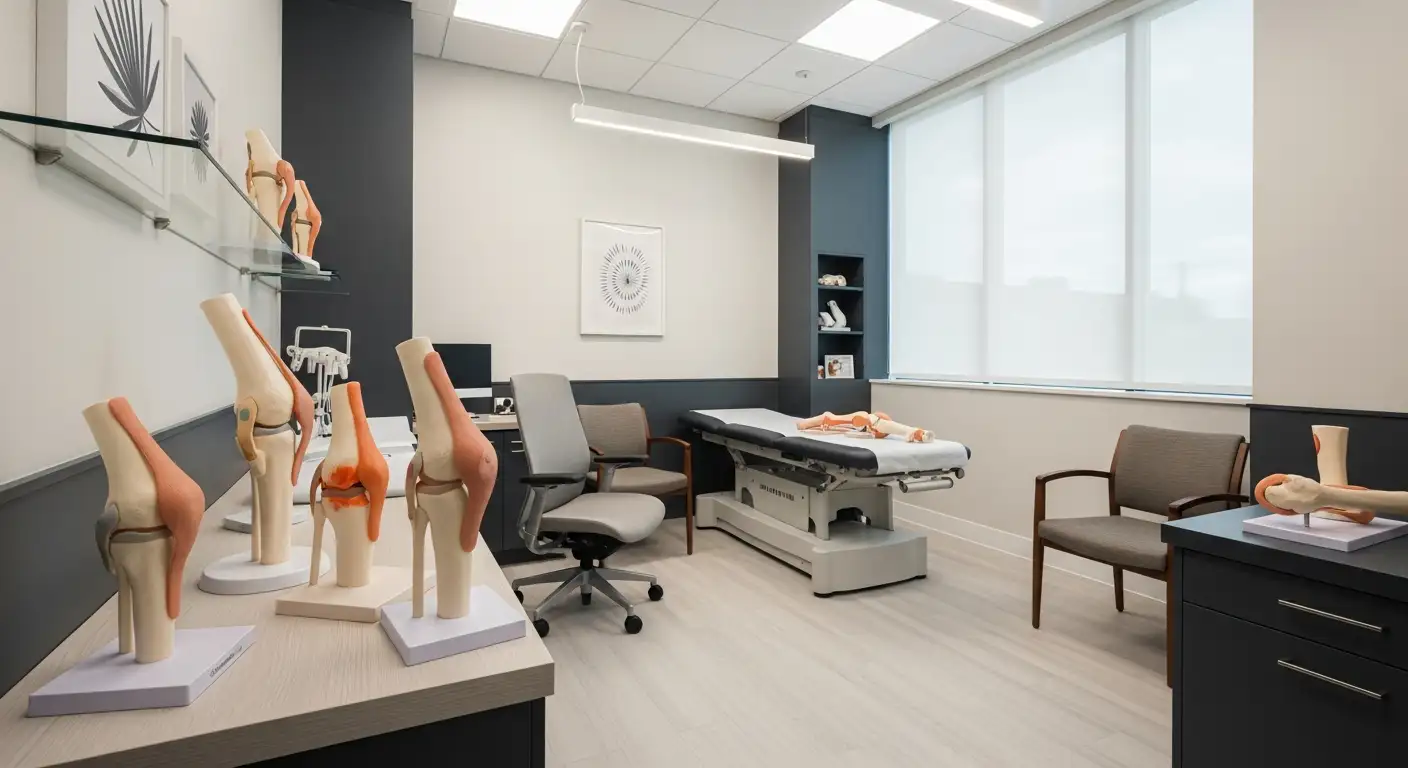Understanding the Power of Physical Therapy in Knee Pain Relief
Knee pain affects millions, impairing daily activities and reducing quality of life. While medications and surgical options are available, physical therapy stands out as an effective, non-invasive alternative that targets the root causes of knee discomfort. This article explores how physical therapy plays a pivotal role in managing various knee conditions, the techniques involved, and strategies for prevention and recovery.
The Central Role of Physical Therapy in Knee Pain Management

What is the role of physical therapy in managing knee pain?
Physical therapy is a vital component in treating various knee conditions. It helps reduce inflammation by encouraging gentle movement and improving blood flow, which aids the body’s natural healing process. Through specialized exercises and manual techniques, physical therapy enhances overall mobility and restores joint function, making daily activities easier.
A fundamental aspect of treatment involves strengthening the muscles that support the knee, such as the quadriceps, hamstrings, and hip stabilizers. Stronger muscles help distribute stress more evenly across the joint, reducing pain and preventing further injury.
Patients also benefit from targeted education. Physical therapists teach proper movement mechanics, activity modifications, and the correct use of assistive devices when necessary. Modalities like joint mobilizations and electrical stimulation are often incorporated into treatment plans; these techniques promote tissue healing, reduce stiffness, and alleviate discomfort.
In essence, physical therapy offers a safe, non-invasive approach that addresses both symptoms and underlying causes of knee pain. It aims to improve joint function, decrease pain, and support long-term joint health, enabling patients to return to their preferred activities with greater confidence.
Techniques and Exercises in Physical Therapy for Knee Pain
 In physical therapy aimed at relieving knee pain, a diverse set of techniques and exercises are employed to help patients regain mobility, reduce discomfort, and strengthen the supporting muscles.
In physical therapy aimed at relieving knee pain, a diverse set of techniques and exercises are employed to help patients regain mobility, reduce discomfort, and strengthen the supporting muscles.
One fundamental component includes stretching exercises. Hamstring stretches, quadriceps stretches, and calf stretches are performed regularly to enhance flexibility in these muscle groups, reducing tension around the knee joint.
To build strength, therapists often recommend targeted exercises such as leg raises, partial squats, clamshells, and bridges. These exercises activate muscles like the quadriceps, hamstrings, glutes, and hip muscles, which play crucial roles in stabilizing the knee.
Manual therapy techniques are also common. These include joint mobilization and soft tissue massage, which help alleviate stiffness, reduce pain, and improve joint mobility.
Balance and proprioception training form an integral part of rehabilitation. Exercises like single-leg stance, using balance boards, and dynamic balance drills help improve joint stability and prevent falls.
Additionally, low-impact aerobic activities such as swimming, cycling, walking, and yoga are encouraged because they promote cardiovascular health and aid in pain reduction without placing excessive stress on the knee.
Careful assessment and customization are vital, so it’s important for patients to work with healthcare professionals to develop a safe, effective routine.
Exploring these techniques and exercises can significantly improve knee function and ease discomfort through a comprehensive, personalized approach.
Conditions Effectively Treated with Physical Therapy

What conditions can be treated with physical therapy for knee pain?
Physical therapy offers effective treatment options for a variety of knee conditions caused by injuries, overuse, or degenerative diseases such as osteoarthritis.
It is particularly beneficial for ligament injuries like tears of the ACL, PCL, MCL, and LCL. In these cases, therapists develop personalized programs that include strengthening exercises, balance training, and activity modification to promote healing and restore function.
Meniscal tears, which involve damage to the cartilage acting as a cushion between the knee’s bones, are also commonly managed through physical therapy. Treatment focuses on improving joint stability, reducing inflammation, and gradually restoring movement.
Other conditions include tendinitis and bursitis, which involve inflammation of tendons and bursae respectively. Therapy may incorporate manual techniques, stretching, and strengthening to alleviate pain and prevent recurrence.
Stress fractures are addressed with rest and activity adjustment, complemented by rehabilitative exercises to regain strength.
Patellofemoral pain syndrome, characterized by pain around the kneecap, benefits from targeted strengthening of the quadriceps and hip muscles, as well as orthotics if flat feet influence kneecap tracking.
Post-surgical rehabilitation is a critical phase where physical therapy helps patients regain mobility, rebuild muscle strength, and ensure proper movement patterns after procedures like meniscectomy or ligament reconstruction.
Overall, physical therapy aims to decrease pain, improve joint function, and prevent future issues through tailored exercise programs, manual therapy, pain management techniques, and the use of supportive devices when necessary.
Recovering and Rehabilitating with Physical Therapy Post-Knee Injury
Physical therapy is essential for effective recovery after knee injuries, focusing on several vital aspects to restore function and prevent future issues. One of its primary goals is to regain joint mobility, which often becomes limited due to swelling and tissue stiffness following injury. Through manual therapy and specific range-of-motion exercises, physical therapists help in easing stiffness and promoting healthy movement patterns.
Reducing swelling is another critical component of post-injury rehabilitation. Techniques such as ice therapy, electrical stimulation, and gentle massage are used to control inflammation, which facilitates faster tissue healing and alleviates discomfort.
Strengthening the muscles surrounding the knee, especially the quadriceps, hamstrings, and glutes, is fundamental in stabilizing the joint. Targeted exercises like leg lifts, curls, and bridges not only support recovery but also improve overall stability, reducing the risk of re-injury.
A gradual progression in exercise intensity and complexity over approximately 4 to 6 weeks ensures safe and effective rehabilitation. Starting with low-impact activities such as stationary cycling and resisted exercises using bands, the program evolves to more dynamic movements as strength and mobility improve, supporting proper tissue healing.
Supporting tissue repair involves combining stretching, strengthening, and functional exercises that enhance flexibility and restore normal movement patterns. Proper tissue healing is fostered by avoiding overexertion and ensuring exercises are performed within pain-free limits.
Preventing future injuries requires emphasis on proprioception and balance training, such as single-leg stands and balance board activities. These exercises improve joint stability and coordination, helping individuals return to daily activities and sports safely.
Overall, physical therapy promotes faster healing, reduces pain, and restores normal knee function. Under the guidance of healthcare professionals, patients utilize personalized exercise programs that support tissue repair, improve strength, and establish proper movement mechanics—ensuring a full and safe return to active life.
For more information on rehabilitation exercises after knee injury, searching with queries like "Rehabilitation exercises after knee injury" can provide valuable routines and expert advice.
Evidence-Based Practices and Prevention Strategies in Physical Therapy
 Physical therapy for knee pain is grounded in scientifically supported methods designed to improve function, reduce pain, and prevent further injury. A prominent practice involves developing individualized exercise programs tailored to target specific muscle groups, such as the quadriceps, hip abductors, external rotators, and core muscles. These exercises have been shown to offer long-term pain relief and enhance overall mobility.
Physical therapy for knee pain is grounded in scientifically supported methods designed to improve function, reduce pain, and prevent further injury. A prominent practice involves developing individualized exercise programs tailored to target specific muscle groups, such as the quadriceps, hip abductors, external rotators, and core muscles. These exercises have been shown to offer long-term pain relief and enhance overall mobility.
Manual therapy techniques, including joint mobilizations and soft tissue manipulations, are employed to improve joint mobility and tissue flexibility. Movement retraining focuses on correcting biomechanics to reduce abnormal tissue loading and prevent degeneration.
Patient education plays a vital role in effective management. Guidance on activity modification, load management, and understanding disease progression empowers patients to participate actively in their recovery and maintain joint health.
Supporting evidence also highlights the benefits of water-based and aerobic exercises like cycling or water aerobics. These low-impact activities improve cardiovascular health, enhance joint function, and reduce weight-related stress on the knees.
In addition, advanced interventions such as blood flow restriction training and gait or stability training are gaining interest. These adjunctive methods aim to maximize rehabilitation outcomes by promoting muscular strength and improving proprioception.
Prevention strategies form a cornerstone of chronic knee care. They emphasize the importance of maintaining strong, flexible muscles through targeted exercises, ensuring proper biomechanics during daily activities, and managing body weight to reduce joint stress.
Together, these evidence-based approaches facilitate a comprehensive, personalized treatment plan that addresses individual needs, boosts recovery, and minimizes the risk of future knee issues.
Prevention and Long-term Management of Knee Pain through Physical Therapy
 Physical therapy plays a vital role in preventing knee pain by promoting healthy movement habits and strengthening supportive muscles. One of the main strategies involves maintaining the strength and flexibility of muscles around the knee, such as the quadriceps, hamstrings, glutes, and hip muscles. Regular targeted exercises like stretches, leg lifts, and resistance training help keep these muscles balanced and capable of supporting the knee properly.
Physical therapy plays a vital role in preventing knee pain by promoting healthy movement habits and strengthening supportive muscles. One of the main strategies involves maintaining the strength and flexibility of muscles around the knee, such as the quadriceps, hamstrings, glutes, and hip muscles. Regular targeted exercises like stretches, leg lifts, and resistance training help keep these muscles balanced and capable of supporting the knee properly.
In addition, correct movement patterns are emphasized during physical therapy. Proper warm-up routines, gradual progression of exercise intensity, and attention to proper technique can minimize unnecessary strain on the knee joint.
Ergonomic adjustments and suitable footwear are also important. Shoes that offer good arch support and proper shock absorption can reduce impact during walking or other activities, decreasing knee stress.
Physical therapists educate patients on joint protection techniques and activity modifications. This includes avoiding repetitive high-impact activities that may cause overuse injuries, and adopting safer ways to perform daily tasks.
Moreover, adopting a holistic approach by maintaining a healthy weight through diet and exercise reduces the load on the knees, further preventing pain and degeneration.
By combining these strategies, individuals can effectively manage and prevent knee pain over the long term, preserving mobility and quality of life.
Empowering Patients for Long-term Knee Health
Physical therapy offers a comprehensive, personalized approach to knee pain management that not only alleviates current discomfort but also promotes long-term joint health. Through targeted exercises, manual techniques, education, and preventive strategies, physical therapists empower individuals to maintain mobility, prevent future injuries, and achieve a better quality of life. Early intervention and adherence to tailored programs are key to optimal recovery and sustained knee health.
References
- When to See a Physical Therapist for Knee Pain - HSS
- Physical Therapy Guide to Knee Pain | Choose PT
- 7 Key Benefits of Physical Therapy for Joint Pain - 360 Orthopedics
- Physical therapy as a promising treatment for osteoarthritis
- Physical Therapy Strategies for Knee Pain Relief - Taylor Rehab
- Can Physical Therapy Help with Knee Rehabilitation? - Ohio
- The Vital Role of Physical Therapy in Knee Rehabilitation
- Beyond Medications: The Role of PT in Knee Pain Management





